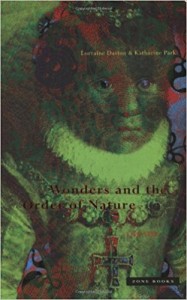Uppsala University
October 26–27, 2017
 A wealth of literature has shed light on religious, philosophical, scientific and medical concepts of extraordinary bodies, wonders and monsters in the sixteenth, seventeenth and eighteenth centuries. Lorraine Daston and Katharine Park have been tremendously influential with their Wonders and the order of nature (1998) and in many ways contributed to our understanding of emotions and the monstrous before 1750. One of their suggestions is that there was no disenchantment, or clear pattern of naturalization, of monsters in the seventeenth and eighteenth centuries. Monstrous births were explained by natural causes, such as a narrow womb or an excess of seed, already by medieval writers whereas they could still be read as divine signs in the late seventeenth century. No linear story took monsters from an older religious framework to a newer naturalistic one or from prodigies to wonders to naturalized objects. Wonders eventually lost their position as cherished elements in European elite culture but that had nothing to do with secularization, the “rise of science”, or some triumph of rational thinking. Rather, the emergence of strict norms and absolute regularity, both of nature’s customs and God’s rules, is a better description of this shift. Nature’s habits hardened into inviolable laws in the late seventeenth century and Daston and Park picture “the subordination of anomalies to watertight natural laws, of nature to God, and of citizens and Christians to established authority”. Monsters became, in an anatomical framework, regarded as organisms that had failed to achieve their perfect final form. Their value now depended, not as earlier on their rarity or singularity, but on the body’s capacity to reveal still more rigid regularities in nature.
A wealth of literature has shed light on religious, philosophical, scientific and medical concepts of extraordinary bodies, wonders and monsters in the sixteenth, seventeenth and eighteenth centuries. Lorraine Daston and Katharine Park have been tremendously influential with their Wonders and the order of nature (1998) and in many ways contributed to our understanding of emotions and the monstrous before 1750. One of their suggestions is that there was no disenchantment, or clear pattern of naturalization, of monsters in the seventeenth and eighteenth centuries. Monstrous births were explained by natural causes, such as a narrow womb or an excess of seed, already by medieval writers whereas they could still be read as divine signs in the late seventeenth century. No linear story took monsters from an older religious framework to a newer naturalistic one or from prodigies to wonders to naturalized objects. Wonders eventually lost their position as cherished elements in European elite culture but that had nothing to do with secularization, the “rise of science”, or some triumph of rational thinking. Rather, the emergence of strict norms and absolute regularity, both of nature’s customs and God’s rules, is a better description of this shift. Nature’s habits hardened into inviolable laws in the late seventeenth century and Daston and Park picture “the subordination of anomalies to watertight natural laws, of nature to God, and of citizens and Christians to established authority”. Monsters became, in an anatomical framework, regarded as organisms that had failed to achieve their perfect final form. Their value now depended, not as earlier on their rarity or singularity, but on the body’s capacity to reveal still more rigid regularities in nature.